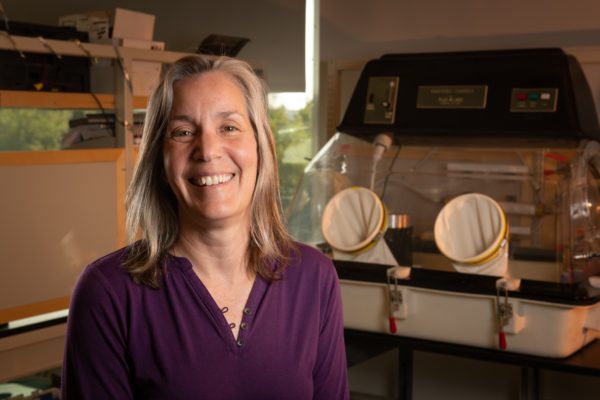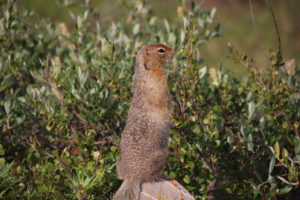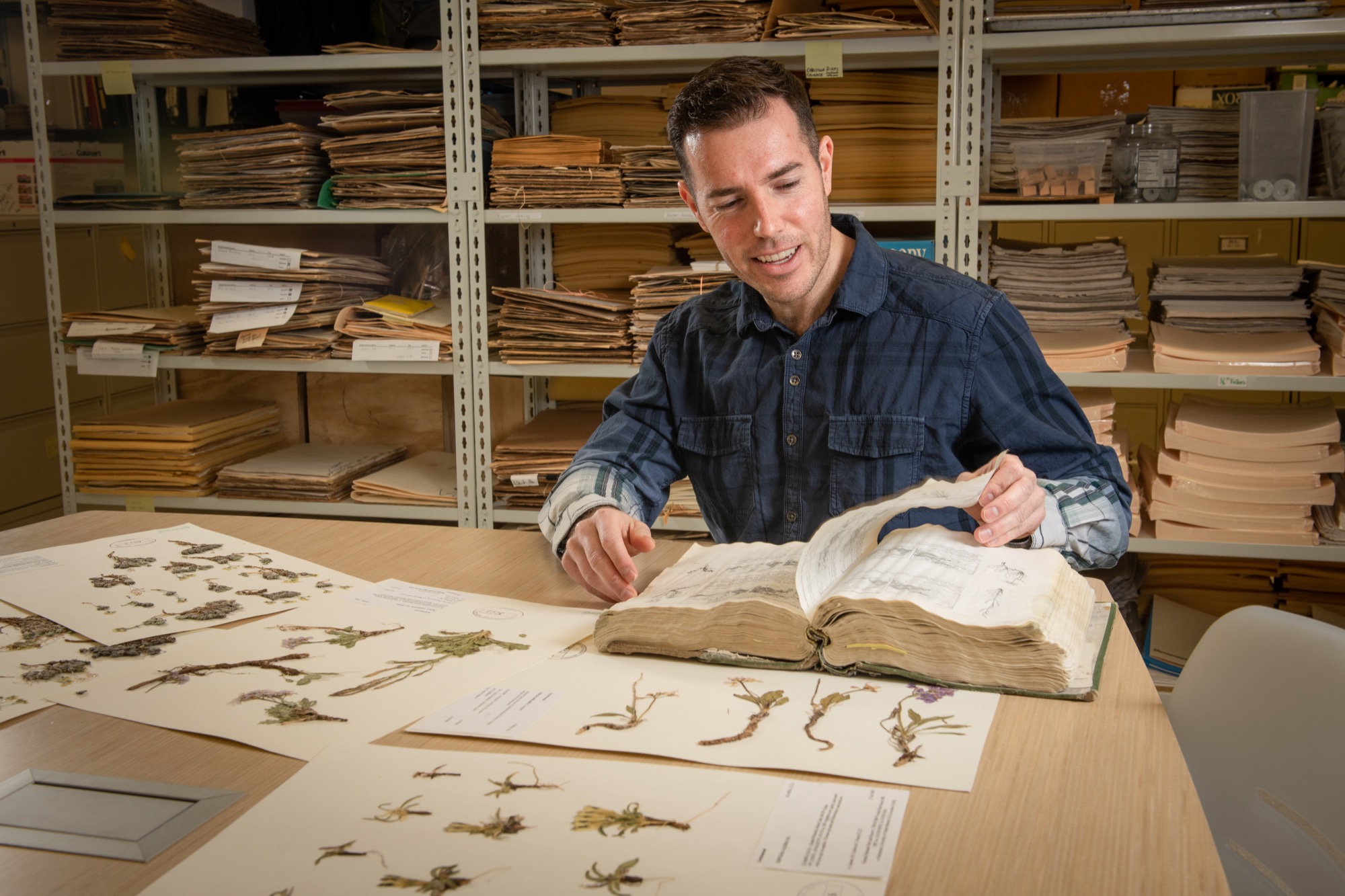Can hibernating squirrels crack the nut of muscle mass loss in humans?
by Matt Jardin |

Khrys Duddleston, Ph.D., is a professor and director of biological sciences at UAA with a concentration on microbial communities. Her recent work is focused on studying how gut microbes in arctic ground squirrels help them maintain muscle mass during hibernation, and what that can tell us about treating age-related loss of muscle mass and skeletal mass in humans. (Photo by James Evans / University of Alaska Anchorage)
When you think of animals that have characteristics that are ideal as the basis for comic book superpowers, squirrels probably don't rank very high on that list. But all of that is set to change.
Khrys Duddleston, Ph.D., is a professor and director of biological sciences at UAA with a concentration on microbial communities. Her recent work is focused on arctic ground squirrels, which she notes are remarkable compared to other animals that hibernate. Specifically, Duddleston is studying how the gut microbes found in arctic ground squirrels help them maintain muscle mass during hibernation.
"These squirrels have the most extreme hibernation physiology of hibernators," explains Duddleston. "They hibernate anywhere between seven and nine months out of the year, and they do not eat or drink at all during that time. Yet they don't suffer things like disuse atrophy. They have some lean mass loss, but it's minimal compared to what you would expect from an animal that's fasting for that much time. What's also absolutely remarkable about them is during hibernation, they drop their core body temperature to minus 2.9 degrees Celsius. They're the only mammal that's been discovered that can regulate their body temperature below zero."
By studying arctic ground squirrels, Duddleston hopes to unlock a way to prevent or lessen similar degradation in humans.
"Because arctic ground squirrels have these physiological capabilities, it makes them a really interesting animal as a sort of model system or model organism to try to understand how they're able to maintain their lean mass under conditions of fasting," describes Duddleston. "That has implications for starvation. It has implications for age-related loss of muscle mass and skeletal mass. If we can understand the mechanisms that facilitate their ability to do this, we might be able to translate that understanding into something that's beneficial to human health."

An arctic ground squirrel during summer 2019. (Photo by Julita Sadowska / Courtesy of Khrys Duddleston)
Duddleston's research is made possible through a recent five-year, $11.8 million grant made by the National Institutes of Health to fund the Center for Transformative Research in Metabolism (CTRM). Led by UAF with participation from UAA professors, all of CTRM's research is in the same vein as Duddleston's project: understanding how the unique metabolism of hibernating animals can treat human health problems.
At UAA, the grant will pay for supplies, staff and new equipment, which Duddleston plans to use to isolate and grow gut microbes that keep arctic ground squirrels from wasting away during hibernation.
One such method is by investigating whether the gut microbes in those squirrels have the potential to create their own essential amino acids - which other animals normally need to receive from their diet - and whether or not the squirrels use those essential amino acids to build or maintain tissues during hibernation.
As outlined by Duddleston, testing the relationship between essential amino acids and arctic ground squirrel tissue would be done by giving the gut microbes a traceable isotope, and then tracking that isotope to see if it makes its way into the tissues via synthesis.
Duddleston estimates the project lasting three years - enough time to properly experiment over multiple hibernation cycles. Temperatures may be cooling down, but her work is just getting warmed up.
"In the future, if we are able to isolate and characterize these microbes, that would enable us to go looking for them in other places. Then we might be able to develop a probiotic or prebiotic. Hopefully we can see this translate in the future, but that's going to be far down the line. My project is very much a first step," says Duddleston.
Written by Matt Jardin, UAA Office of University Advancement
 "Can hibernating squirrels crack the nut of muscle mass loss in humans?" is licensed under a Creative Commons Attribution-NonCommercial 4.0 International License.
"Can hibernating squirrels crack the nut of muscle mass loss in humans?" is licensed under a Creative Commons Attribution-NonCommercial 4.0 International License.














